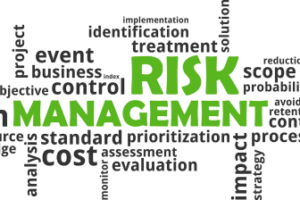
Research study on Buy Now Pay Later (BNPL)
Research study on Buy Now Pay Later (BNPL)
Buy Now Pay Later (BNPL)
By Purnima Singh and Chrysann D’Souza, PGDRM Jan’21-22
Credit cards Vs BNPL

Introduction to BNPL
Buy Now, Pay Later (BNPL) is a type of short-term financing that allows consumers to make purchases and pay for them at a future date, often interest-free. Also referred to as point-of-sale installment loans, BNPL arrangements are becoming an increasingly popular payment option, especially when shopping online.
-Investopedia
Key players in the BNPL business are Affirm, Zest Money, Lazy Pay, Amazon Pay, PaytmPostpaid, Flex money, Ola pay, After pay, Razor, and Post-pay.

Models in BNPL
Integrated Shopping Apps
Card-Linked Installments
Off-Card financing
Virtual rent-to-own
Vertical focused larger ticket plays
SME sales financing
Business model

Economics of BNPL business
BNPL Profits = GMV * [ Net Take Rate –Debt financing cost –Debt management cost –Provision for Debt impairment ] -Marketing & Sales expenses –General & admin expenses
Net Take Rate: Commission charged to merchants (take rate) -processing fees paid by BNPL Co.
Debt financing cost: interest BNPL providers pay banks for liquidity
Debt management cost: Credit check cost + payment collection cost –late payments collected from customers
Provision for debt impairment: weighted average % of loans that are not paid back
GMV (Gross Merchandising Value): Sum of all the payments conducted on the BNPL platform.
Marketing and sales: Expenses incurred on acquiring and onboarding both merchants and customers
General and administrative expenses: Team salaries, technology, and infrastructure costs.
Net Take Rate: Commission charged to merchants (take rate) -processing fees paid by BNPL Co.
Debt financing cost: interest BNPL providers pay banks for liquidity
Debt management cost: Credit check cost + payment collection cost –late payments collected from customers
Provision for debt impairment: weighted average % of loans that are not paid back
GMV (Gross Merchandising Value): Sum of all the payments conducted on the BNPL platform.
Marketing and sales: Expenses incurred on acquiring and onboarding both merchants and customers
General and administrative expenses: Team salaries, technology, and infrastructure costs.
Regulations
European Union moves to protect customers
EU consumer credit rules
These rules may discourage sign-ups more onerous credit checks may make it harder for consumers to sign up for new services.
Australia
BPL providers enjoyed a relaxed regime in Australia, as the provisions of the Australian National Consumer Credit Protection Act of 2009 do not apply to certain types of loans, including short-term interest-free credits. The industry has eventually adopted a self-regulatory approach.
The Australian Finance Industry Association (AFIA) announced on the 1st of March 2021 that its
Code of Practice for the BNPL sector has come into effect.
BNPL disputes under the code will be managed by the Australian Financial Complaints Authority, where a designated committee will have the power to publicly denounce companies that provide loans services outside the Code’s standards.
Regulatory issues for BNPL in the UK
Consumer credit regime: Falling within this regime means
Exclusions: 60F
Money laundering regime: the scope is wide –it applies to any ‘lending’.
The consequences of falling within this regime are that the person must
(1) apply customer due diligence measures (for example, verifying the identity of the customer) and
(2) be registered with the FCAFinancial Conduct Authority(for the purposes of money laundering supervision).
For the Merchant Model, it is likely that the merchant would fall within the scope. For the Partner Model, it is likely that the BNPL provider would fall within scope but the merchant may not depending upon how the arrangements are set up (because the broking of credit does not fall within the scope of the anti-money laundering regime).
With these conclusions in mind, the Government intends to make legislative changes as soon as parliamentary time allows.
US
CASES:
At the beginning of the year, some tensions occurred in California. The California Department for Business Oversight (DBO), a division of the state government that regulates financial services, has taken over several cases focused on BNPL services.
India
1) The Reserve Bank of India Act, 1934-broadly defines NBFCs to include a company that carries on as its business or part of its business financing, whether by way of making loans or advances or otherwise, of any activity other than its own. It would therefore appear that the activity of extending short-term loans would require Fintech’s offering BNPL services to be registered as NBFCs.
To alleviate the need for such a registration, BNPL service providers typically partner with NBFCs.
If Fintech is underwriting any bad-debt risk or financing the debt owed by the consumer through any mechanism, then it may qualify as having undertaken NBFC activities. This may, in turn, trigger the need for appropriate registration with the RBI.
2) The Payments Actgoverns payments systems which enable payment between a payer and a beneficiary, including systems enabling credit cards and similar operations. Requires approval since a BNPL feature relies heavily on a financial partner registered as an NBFC for payments and settlements, Fintech entities offering BNPL do not obtain authorization.
3) The need for any additional government intervention, as proposed in the RBI discussion paper, will also have to be thought through, as such intervention may hinder growth and stifle innovation. For example, digital wallet companies have in the past made representations to the RBI to lessen regulatory interference fearing that increased regulatory requirements will affect product use. Innovation, and consequently, the Fintech space, can only thrive in an evolved regulatory environment.
Risks in BNPL

Merchant Fraud Risk
Dishonest merchants can be a channel of fraud.
Failure to identify legitimate from illegitimate merchants.
Illegitimate merchants can submit falsified orders using real or fictitious consumer PII and collect payments for products sold but not shipped.

Merchant Default Risk
Due to the pandemic, some merchants are at a greater risk of failure. Some might be coping with declining revenues, rising variable costs, high fixed costs, or any other scenarios in a business where they are unable to pay the fees which contribute to increasing merchant default risk.
Merchant shutting off their business without notice is problematic if they owe funds to their BNPL partners.
Buy Now, Pay Later FinTechs leverage 3rd Party Solutions to Mitigate Risks
BNPL players are trying to mitigate merchant fraud and merchant default risk by combining data, such as risk detail, business cash flow analysis, previous payment performance, etc.
Additionally, BNPL FinTechs are seeking assistance from 3rd-parties with expertise in data analytics, risk score/index modeling, and decision automation.
This powerful risk management strategy enables quick approval/decline decision-making.
Ongoing merchant monitoring will enable timely responses to changing risk conditions.

Customer Default Risk
Soft credit checks
Opaque debt performance reporting –lenders could underestimate a borrower’s debt level.
With job losses and unemployment, consumers who may want to but who do not have enough income to make repayments-may fall into a debt trap.
15% of Australian consumers using BNPL had to take out additional loans to pay off their obligations.
Mitigating step: Economies of scale along with data analysis will help in eliminating bad customers which ultimately will reduce customer default risk

Cyber and Fraud Risk
Chargeback is always an issue with compromised accounts and the liability falls on the BNPL.
Fraudsters are known to use synthetic identities to pass through fraud, KYC, and credit checks with zero intention of paying back the purchase. Account takeover attacks(ATO)can also take place on such platforms, with fraudsters using bots to exploit weak passwords, or purchasing stolen credentials from paste bins on the dark web.

Default Fraudulent Charge Back
Chargeback liability might fall on BNPL service providers when consumers notice an unauthorized purchase or makes the purchase and attempt to claim it as fraudulent.

Market Risk
The BNPL sector is growing drastically. In addition to pure BNPL startups, e-commerce platforms, banks as well as fintech/payment companies have entered this space.
Flywheel effect –will lead to consolidation in the market (small players unable to achieve economies of scale or raise enough money will have to exit the space)

BNPL players may not always be able to obtain loans from payment facilitators at the desired interest rate.
References
Get the full research study here: BNPL Model-pdf
Disclaimer
This report has been produced by students of Global Risk Management Institute for their own research, classroom discussions and general information purposes only. While care has been taken in gathering the data and preparing the report, the student’s or GRMI does not make any representations or warranties as to its accuracy or completeness and expressly excludes to the maximum extent permitted by law all those that might otherwise be implied. References to the information collected have been given where necessary.
GRMI or its students accepts no responsibility or liability for any loss or damage of any nature occasioned to any person as a result of acting or refraining from acting as a result of, or in reliance on, any statement, fact, figure or expression of opinion or belief contained in this report. This report does not constitute advice of any kind.
You may also like

Best Short Term Courses in IT for Freshers
November 14, 2025

What is the Best Course in Risk Management in India?
November 14, 2025

Short-Term PG Diploma Programs with High Career Potential
November 14, 2025

